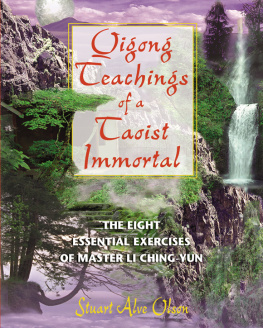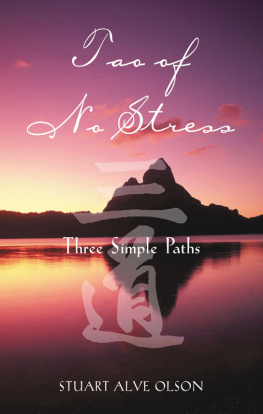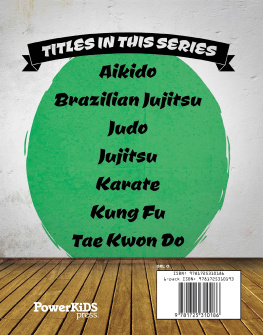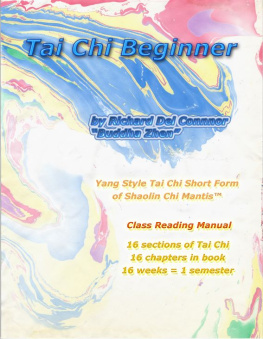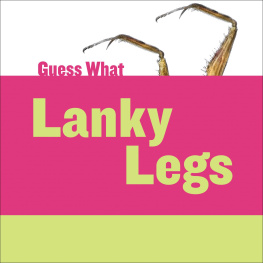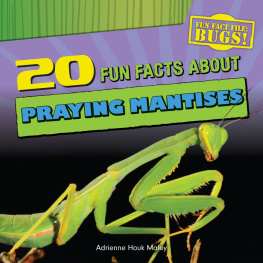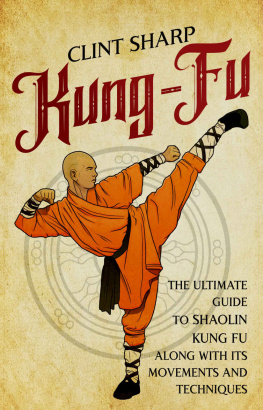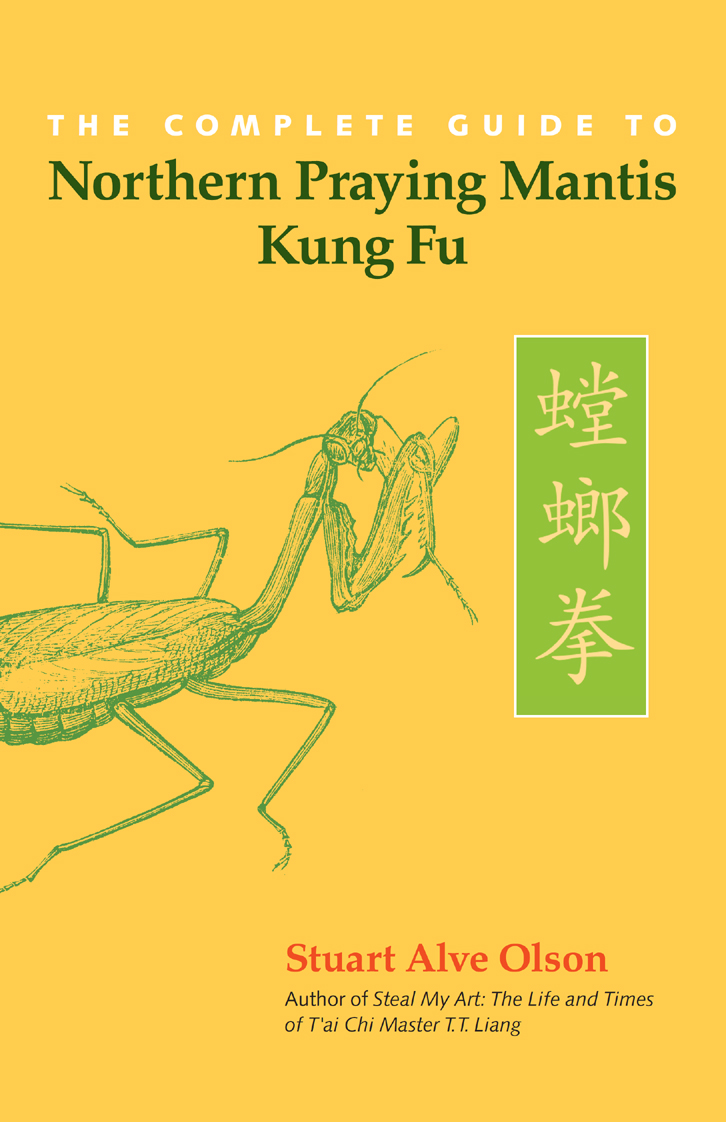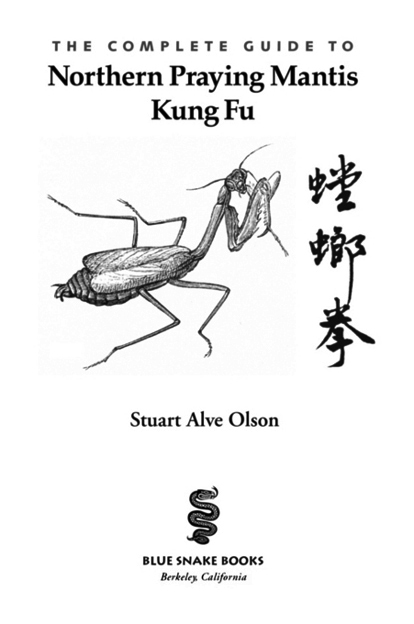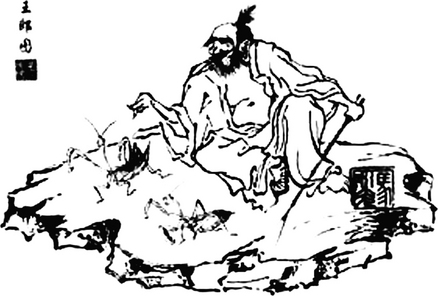Copyright 2005, 2010 by Stuart Alve Olson. All rights reserved. No portion of this book, except for brief review, may be reproduced, stored in a retrieval system, or transmitted in any form or by any meanselectronic, mechanical, photocopying, recording, or otherwisewithout written permission of the publisher. For information contact Blue Snake Books c/o North Atlantic Books.
Published by Blue Snake Books
Originally published by Valley Spirit Arts, 2005
Blue Snake Books is an imprint of
North Atlantic Books
P.O. Box 12327
Berkeley, California 94712
Cover design by Brad Greene
This book contains translated selections from:
Shih Yung Tang Lang Chuanby Wei Hsiao-Tang
Shih Yung Tang Lang Chuan Hsu Chiby Wei Hsiao-Tang
Shih Pa Lohan Kungby Huang Han-Hsun
The Complete Guide to Northern Praying Mantis Kung Fu is sponsored by the Society for the Study of Native Arts and Sciences, a nonprofit educational corporation whose goals are to develop an educational and cross-cultural perspective linking various scientific, social, and artistic fields; to nurture a holistic view of arts, sciences, humanities, and healing; and to publish and distribute literature on the relationship of mind, body, and nature.
North Atlantic Books publications are available through most bookstores. For further information, call 800-733-3000 or visit our websites at www.northatlanticbooks.com. and www.bluesnakebooks.com.
PLEASE NOTE: The creators and publishers of this book disclaim any liabilities for loss in connection with following any of the practices, exercises, and advice contained herein. To reduce the chance of injury or any other harm, the reader should consult a professional before undertaking this or any other martial arts, movement, meditative arts, health, or exercise program. The instructions and advice printed in this book are not in any way intended as a substitute for medical, mental, or emotional counseling with a licensed physician or healthcare provider.
The Library of Congress has cataloged the printed edition as follows:
Olson, Stuart Alve.
The complete guide to northern praying mantis kung fu / Stuart Alve Olson.
p. cm.
eISBN: 978-1-58394-692-3
1. Kung fu. I. Title.
GV1114.7.O58 2009
796.8159dc22
2009038598
v3.1
Attributed Praying Mantis Kung Fu Founder, Wang LangSeventeenth Century
Acknowledgments
I wish to offer my deepest gratitude to the late masters Wei Hsiao-Tang and Huang Han-Hsun (Wong Han-Fon), whose works provided an incredible amount of information I was able to draw upon in forming this book. I also offer my deepest thanks to Master T. T. Liang for teaching me the Praying Mantis Kung Fu styles he learned from Wei Hsiao-Tang and Huang Han-Hsun, and to Master Kung Wei for instructing me on the Plum Blossom Praying Mantis style. I truly miss both of these great men and wish the entire world could have known them the way I had.
Special thanks to Patrick Gross for his editing and design work on this book and for appearing in the photographs of the Lohan exercises, Daniel Dale for appearing in the Theory and Practice section, Vern Peterson for sharing his knowledge of Southern Praying Mantis Kung Fu, Louis Sacharske for sharing many of his insights into the world of Praying Mantis Kung Fu, and, lastly, Lily Shank, Karen Morodomi, and Annetta Luce, my initial female Praying Mantis students, for all their support, dedicated learning, and insights regarding how effective and beneficial Praying Mantis Kung Fu can be for womenafter all, it is the female mantis that dominates this particular insect species, so it seems just that women take their rightful place in both the lineage and practice of this particular martial art.
Contents
P ART O NE
Eight Kung Methods
P ART T WO
Eight Stance Methods
P ART T HREE
Eight Footwork Methods
P ART F OUR
Eight Kicking Methods
Introduction
Praying Mantis Kung Fu is the only martial art based on the fighting abilities of an insect. The Chinese, in particular, have had a fascination and preoccupation with modeling their martial arts on the inherent skills of animals. The indigenous martial art forms of Shaolin Temple Boxing were based on the movements of five animals: Crane, Tiger, Leopard, Dragon, and Snake. Praying Mantis Kung Fu, on the other hand, incorporated defensive and offensive maneuvers stemming from the insect world, namely the manidae (praying mantis). Biologically designed for fighting and killing prey with efficiency and technique, the praying mantis is capable of destroying other insects six times its own size. Few animals can achieve this feat, and those that can do so only by sheer ferocity and strength. The mantis, however, relies on methodical, swift movements for defense and offense. Considering the incredible skills of this insect, it is no wonder the martial artist Wang Lang created a style of martial art based on the mantis three hundred years ago.
Wang Lang was not the first to notice the great fighting skills of the mantis, especially in regard to its preying upon its larger and blustering natural enemy the cicada. An example comes from the Tang dynasty poet Lo Hung-Chien, who makes the following analogy about life through the actions of a mantis:
The desires of men are as insatiable as a snake desiring to swallow an elephant; while life itself resembles a praying mantis seizing a cicada.
The praying mantis was named for the look of its front forelegs, which appear to be folded in prayer as it patiently awaits its prey. They have a voracious appetite, and the females are larger and fiercer than the males. After mating, a female will turn on the weakened male and quickly devour his head. Scientists theorize that this may be a response to her need for added nourishment for her upcoming pregnancy or that it is a way of maintaining population control. Or, it may be that they just attack and eat whatever is available at the moment.
In Chinese thinking the praying mantis represents greed and perseverance: greed in how voraciously it devours its prey and perseverance in how patiently and constantly it hunts. No other insect is quite as skilled or persistent as the praying mantis. Nature obviously designed this slender insect for fighting, with its spiny raptor-like forelegs attached to a cylindrical prothorax that gives it complete articulation of body movement and allows for wide arcing of its entire body. The praying mantis is exactly what Master Liang humorously called it, a lean, green, fighting machine.
The martial art of Praying Mantis Kung Fu (traditionally called Tang Lang Chuan, or Praying Mantis Boxing), like most of the martial art styles created in China, developed into both southern and northern systems. In the case of Praying Mantis Kung Fu, the northern school is the original system and was first created in Shantung Province of northern China. The southern school developed later in Kuangtung Province. The differences in style between these two systems are very apparent. Briefly, the southern school has two basic forms of training: the Three-Step-Arrow and the Eighteen-Point-Strike forms. The footwork of the southern style is more fixed, making use of sliding step actions. The northern school is based on the original twelve movements and eight basic kicking methods. The footwork is much more active, agile, and swift than that of the southern styles. Both systems are very effective and adhere to many of the same principles.


